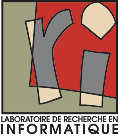LEAP Nets for System Identification and Application to Power Systems
Résumé
Using neural network modeling, we address the problem system identification for continuous multivariate systems, whose structures vary around an operating point. Structural changes in the system are of combinatorial nature, and some of them may be very rare; they may be actionable for the purpose of controlling the system. Although our ultimate goal is both system identification and control, we only address the problem of identification in this paper. We propose and study a novel neural network architecture called LEAP net, for Latent Encoding of Atypical Perturbation. Our method maps system structure changes to neural net structure changes, using structural actionable variables. We demonstrate empirically that LEAP nets can be trained with a natural observational distribution, very concentrated around a ``reference'' operating point of the system, and yet generalize to rare (or unseen) structural changes. We validate the generalization properties of LEAP nets theoretically in particular cases. We apply our technique to power transmission grids, in which high voltage lines are disconnected and re-connected with one-another from time to time, either accidentally or willfully. We discuss extensions of our approach to actionable variables, which are continuous (instead of discrete, in the case of our application) and make connections between our problem setting, transfer learning, causal inference, and reinforcement learning.
| Origine | Fichiers produits par l'(les) auteur(s) |
|---|



